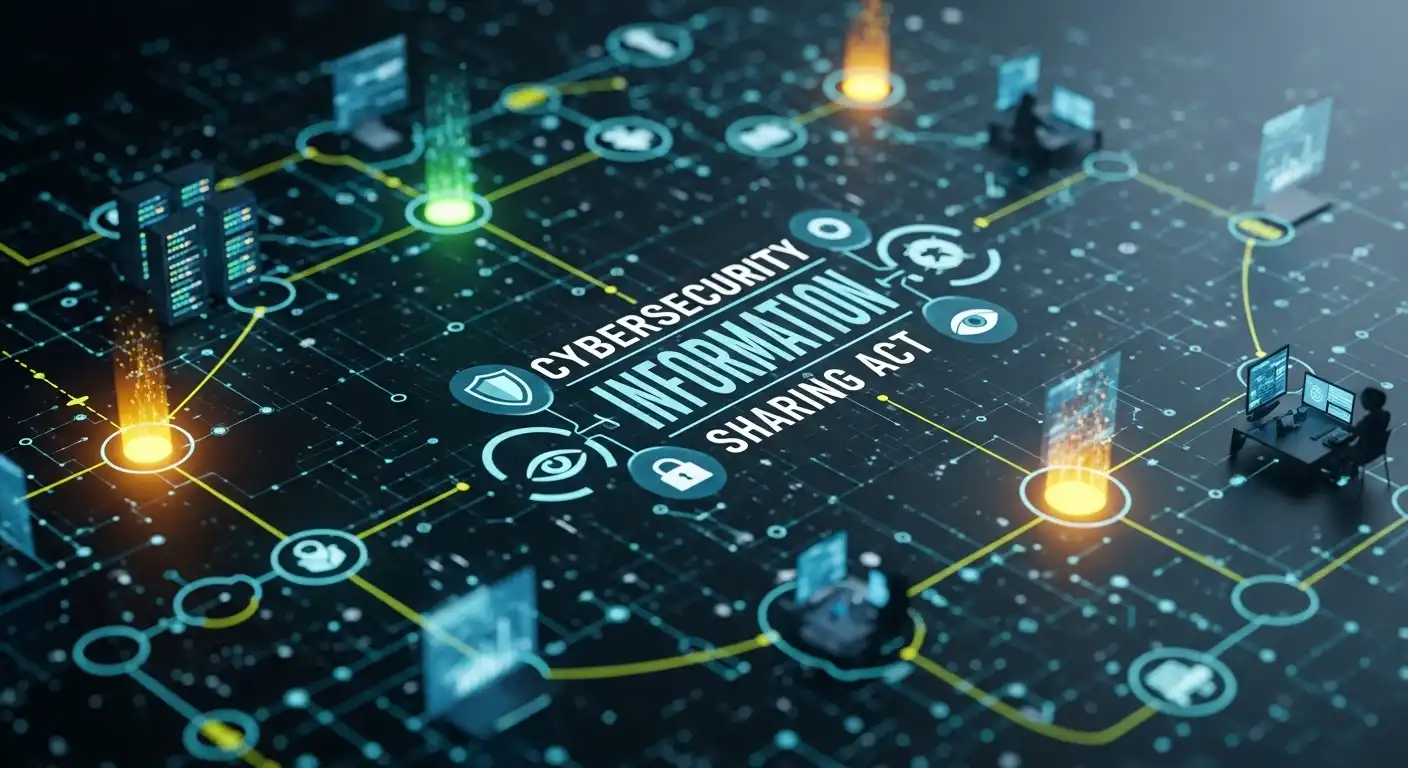Did CISA Lapse? Cyber Threat Sharing, Privacy, and What Legal Teams Should Do
The Cybersecurity Information Sharing Act (CISA) was passed in 2015 to improve national resilience against cyberattacks by encouraging collaboration between private companies and federal agencies. The law promised legal protections for organizations that shared cyber threat intelligence in good faith. Nearly a decade later, uncertainty about whether CISA has lapsed or weakened is raising alarms in the legal, compliance, and security communities. If those protections vanish, companies could face significant liability when coordinating against hackers — potentially leaving the entire ecosystem more vulnerable.
A Brief History of CISA
CISA emerged after a series of major breaches — including attacks on large retailers and the U.S. government itself. Policymakers concluded that private organizations were often first to spot indicators of compromise, but reluctance to share data with government agencies was widespread. Fear of liability and regulatory penalties kept many companies silent. CISA attempted to solve that problem by offering:
- Liability protections: Companies that shared cyber threat indicators were shielded from lawsuits.
- Regulatory safe harbors: Disclosures would not be used as evidence of regulatory noncompliance.
- Centralized exchange: Data could flow to the Department of Homeland Security’s Automated Indicator Sharing program.
For years, this framework gave companies confidence to cooperate with each other and with the government. The act was hailed as a milestone in public-private cyber defense.

Why Concerns About a Lapse Are Growing
By 2025, however, funding uncertainties, political debates, and questions about statutory authority have raised doubts about whether CISA’s core protections remain intact. Even a perception of weakness can undermine its purpose. If organizations believe safe harbor protections no longer apply, they may retreat into silence just when information sharing is most critical.
The stakes are high. Ransomware gangs, state-backed hackers, and insider threats have all grown in sophistication. A lapse in CISA could reduce visibility into attack patterns and increase the likelihood of cascading damage across industries.
Legal Exposure Without CISA
Without CISA’s protections, companies face multiple avenues of liability:
- Privacy claims: Sharing logs or packet captures might inadvertently expose personal identifiers, sparking lawsuits under privacy laws.
- Breach of contract: Vendors and customers could allege violations of nondisclosure or data-processing agreements.
- Regulatory risk: State-level privacy regimes such as the California Consumer Privacy Act (CCPA) or the Virginia Consumer Data Protection Act (VCDPA) might penalize sharing without user consent.
- Reputational harm: Negative press around “sharing customer data with the government” could damage brand trust, regardless of intent.
Comparisons to Other Laws
It is useful to compare CISA to other frameworks:
- GDPR (EU): While GDPR permits data sharing for legitimate security interests, its strict definitions of personal data can complicate sharing indicators with U.S. agencies.
- NIS2 Directive (EU): Requires certain operators to report cybersecurity incidents to national authorities, but without U.S.-style liability shields.
- HIPAA (U.S.): Provides health data protections but carves out security exceptions; however, HIPAA does not apply broadly to commercial cyber threat indicators.
These comparisons show that CISA filled a unique gap — without it, the U.S. loses a rare statutory shield for private entities.
Case Studies: The Role of Threat Sharing
To understand why threat sharing matters, consider two scenarios:
1. The Ransomware Wave of 2021
During the Colonial Pipeline attack, rapid sharing of indicators helped other energy companies harden defenses and prevent cascading outages. CISA’s protections gave legal cover for collaboration that might otherwise have been slowed by hesitation.
2. The Log4j Vulnerability (2021–2022)
When Log4j exploitation emerged, companies shared detection scripts and malicious IP addresses through trusted channels. Without liability shields, some of that information could have been withheld for fear of litigation risk.
Sector-Specific Implications
The loss of CISA protections would affect industries differently:
- Healthcare: Hospitals face HIPAA restrictions; without CISA, legal teams may advise against sharing indicators tied to patient data.
- Finance: Banks rely on FS-ISAC for collective defense; weaker protections could reduce participation, heightening systemic risk.
- Technology: Cloud providers may become hesitant to disclose attacks on shared infrastructure, leaving customers blind to threats.
- Critical infrastructure: Utilities and transportation operators face unique national security stakes; yet they could face lawsuits without CISA’s shield.

What Legal Teams Should Do Now
Whether or not CISA lapses, prudent legal teams must prepare. Recommendations include:
1. Contractual Safeguards
Draft cyber threat sharing carve-outs into vendor contracts and NDAs. This ensures cooperation is not inadvertently prohibited.
2. Privacy-Preserving Techniques
Deploy technical measures like tokenization, pseudonymization, and redaction of personally identifiable information before sharing logs.
3. Strengthen Incident Response Plans
Legal review should be embedded into incident response workflows. Decision trees can guide when and how information can be shared lawfully.
4. Monitor Legislative Developments
Keep close tabs on congressional hearings and DHS updates. State legislatures may create new safe harbors or requirements in the absence of federal clarity.
5. Educate Boards and Executives
Boards must understand the business risk. General counsel should brief directors using accessible language and clear risk matrices.
Insurance and Risk Management
Cyber insurers already demand robust governance. Without CISA, underwriters may raise premiums or tighten exclusions. Legal and risk management teams should revisit policies to clarify how information sharing is treated and whether exclusions apply.
International Dimensions
Global companies face layered challenges. Sharing indicators with the U.S. may run afoul of GDPR or China’s Cybersecurity Law. Legal teams must map out cross-border transfer rules and consider anonymized or aggregated data where possible.
Tools and Frameworks for Legal Teams
Several resources can help bridge the gap if CISA protections falter:
- Information Sharing and Analysis Centers (ISACs): Sector-specific groups offer private channels for collaboration.
- NIST Cybersecurity Framework: Guides companies on incorporating threat sharing into broader governance.
- DHS AIS program: Still operational, but may lose participation if liability shields vanish.
Practical Checklist
Legal departments can use this quick checklist:
- ✔ Review contracts for data-sharing restrictions
- ✔ Establish anonymization protocols for logs
- ✔ Update incident response playbooks
- ✔ Coordinate with CISOs and risk managers
- ✔ Monitor federal and state legislative updates
- ✔ Brief boards on emerging risks
Key Takeaways
- CISA created essential legal shields for cyber threat sharing.
- A lapse could expose organizations to privacy, contract, and regulatory risks.
- Legal teams must proactively update contracts, policies, and training.
- Sector-specific implications make preparation urgent for healthcare, finance, and critical infrastructure.
- Boards and executives need clear, actionable briefings on these risks.
Conclusion
Cyber defense depends on collaboration. CISA’s possible lapse reminds us that legal protections are not permanent. Forward-looking legal teams should not wait for Congress to act but should instead harden governance frameworks, strengthen contracts, and align with cybersecurity leaders now. The adversaries are coordinated and relentless — our defenses must be equally prepared.
